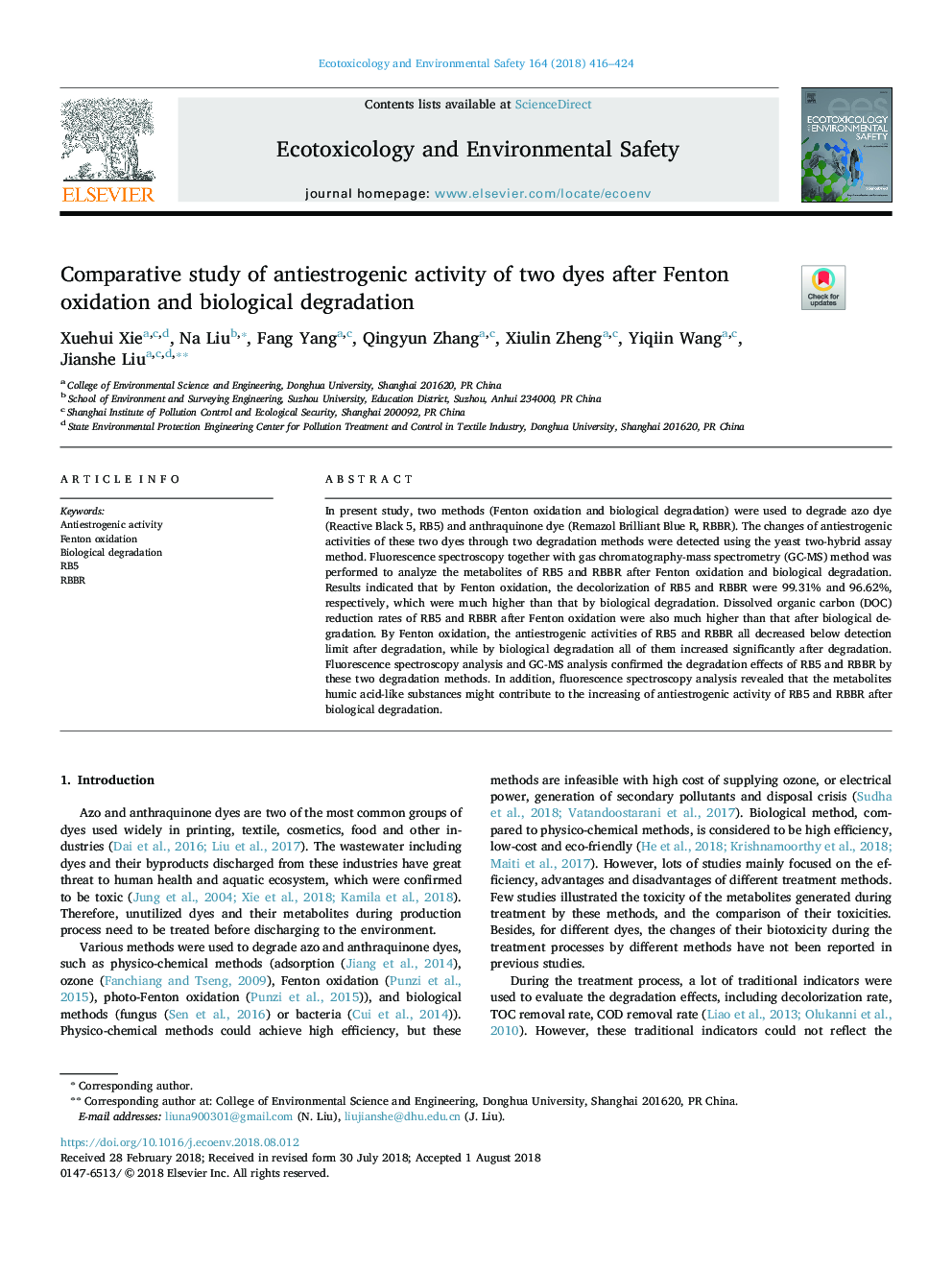| Article ID | Journal | Published Year | Pages | File Type |
|---|---|---|---|---|
| 8853176 | Ecotoxicology and Environmental Safety | 2018 | 9 Pages |
Abstract
In present study, two methods (Fenton oxidation and biological degradation) were used to degrade azo dye (Reactive Black 5, RB5) and anthraquinone dye (Remazol Brilliant Blue R, RBBR). The changes of antiestrogenic activities of these two dyes through two degradation methods were detected using the yeast two-hybrid assay method. Fluorescence spectroscopy together with gas chromatography-mass spectrometry (GC-MS) method was performed to analyze the metabolites of RB5 and RBBR after Fenton oxidation and biological degradation. Results indicated that by Fenton oxidation, the decolorization of RB5 and RBBR were 99.31% and 96.62%, respectively, which were much higher than that by biological degradation. Dissolved organic carbon (DOC) reduction rates of RB5 and RBBR after Fenton oxidation were also much higher than that after biological degradation. By Fenton oxidation, the antiestrogenic activities of RB5 and RBBR all decreased below detection limit after degradation, while by biological degradation all of them increased significantly after degradation. Fluorescence spectroscopy analysis and GC-MS analysis confirmed the degradation effects of RB5 and RBBR by these two degradation methods. In addition, fluorescence spectroscopy analysis revealed that the metabolites humic acid-like substances might contribute to the increasing of antiestrogenic activity of RB5 and RBBR after biological degradation.
Related Topics
Life Sciences
Environmental Science
Environmental Chemistry
Authors
Xuehui Xie, Na Liu, Fang Yang, Qingyun Zhang, Xiulin Zheng, Yiqiin Wang, Jianshe Liu,
